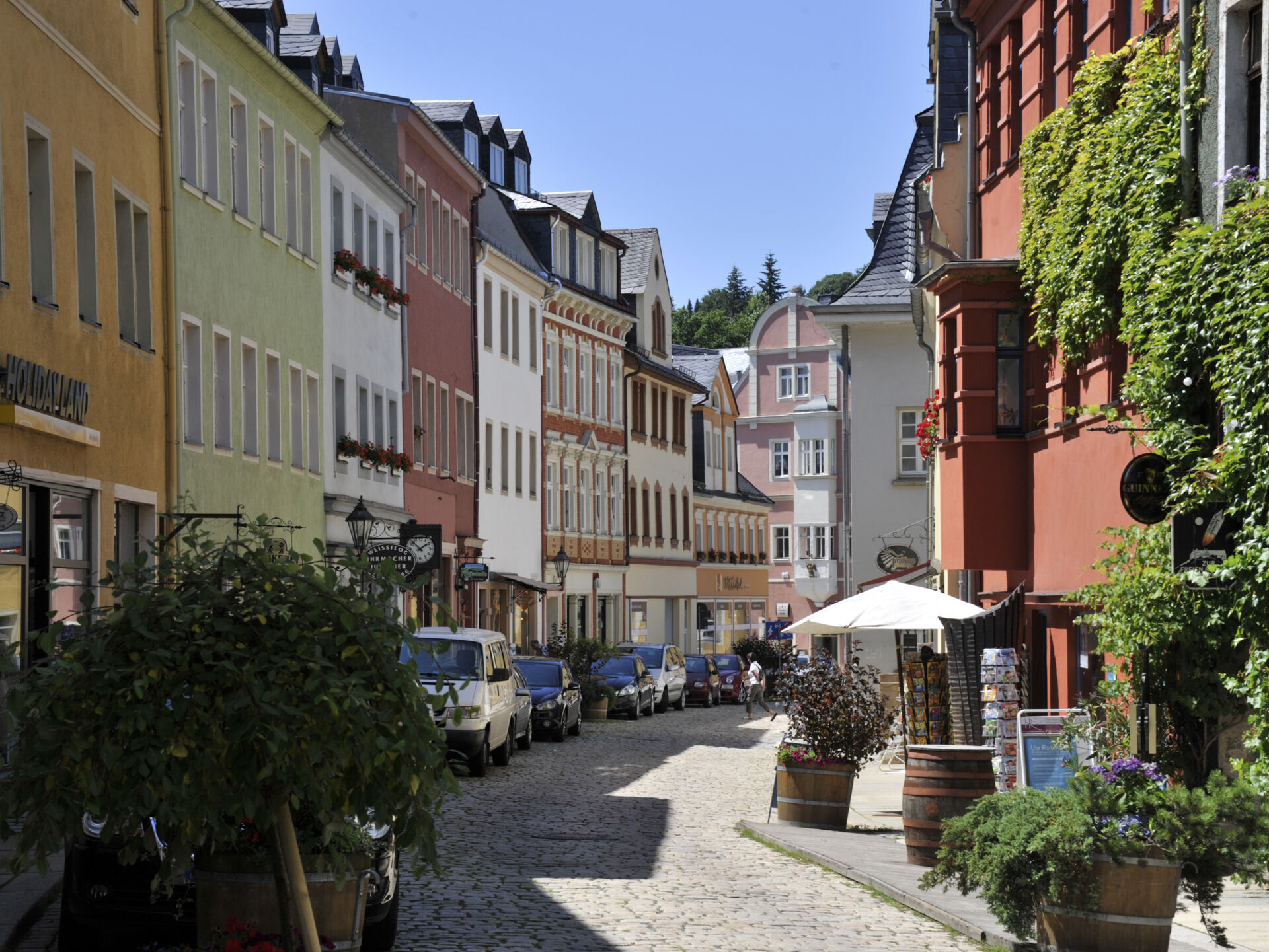Schwarzenberg
The mining city of Schwarzenberg, also known as the “Pearl of the Erzgebirge,” earned its appellation long ago and continues to deserve it today. Maturing over the 850 years of its exciting history, Schwarzenberg has become a favourite excursion and tourist destination, with its emblematic castle and St. George Church, and it is at the same time a major location for businesses. We will limit ourselves here to naming and briefly describing two major hallmarks of Schwarzenberg. If you would like to learn more about Schwarzenberg or organise a visit to the “Pearl of the Erzgebirge,” you will find all the important information you need on the website www.schwarzenberg.de
Schwarzenberg is known as the birthplace of washing machine manufacturing in Germany. Karl Louis Krauss, inventor of the galvanised “public bathtub,” developed the steam washing machine with a perforated drum in 1902. His son, Friedrich Emil Krauß, perfected this invention into the electric washing machine, which was a prototype for the washing machines used everywhere today. He is still cited as one of the great pioneers in the area of household technology. At the VEB Washing Machine Factory in Schwarzenberg, more than eight million washing machines were manufactured until 1990. Unfortunately, the factory could not be saved during the transformations taking place at that time, so Schwarzenberg is no longer a production site for washing machines. Passionate, committed and creative individuals were not deterred following the change, but determined to make a new beginning. Thus, the city has once again developed innovative, modern businesses in recent years, which today provide employment for than 2000 workers at three large and multiple smaller industrial zones, and are also active in the global market.
Schwarzenberg is also remembered as a term associated with myths and legends of the “unoccupied period” in 1945. “The war was over and nobody came”—this was actually what took place more than 65 years ago in the region and the city. At the end of the war in 1945, a small piece of German territory remained “unoccupied.” None of the allied armies advanced into the Erzgebirge city. It was a remarkable coincidence of history that the area of Schwarzenberg remained a “no-man’s land” for a period of six weeks following May 11. It was an “unoccupied zone.” Years later, the writer, Stefan Heym wrote a novel about this historical episode, and since that time, the city has held on to the legend of a “Republic of Schwarzenberg.” The artists group around Jörg Beier (Kunstzone) have coined the expression, “Free Republic of Schwarzenberg” and see this as a vision for their city. Since then, the story has moved between truth and fiction, between what took place and what might once have taken place.

